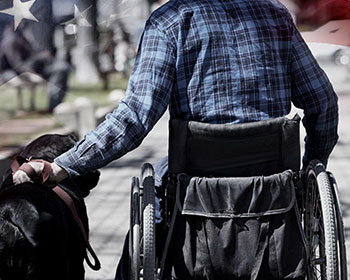Research Reports
Report Details
Abstract
 The current pandemic has affected the lives of all Americans. Rural communities are particularly vulnerable because of a lack of mobility services and the great distances individuals must travel for healthcare and other needs. Nearly five million veterans live in rural communities, representing 57% of Veterans Administration (VA) health care enrollees (MOAA 2020). COVID-19 cases and deaths among rural veterans have increased at a faster rate compared to veterans in urban areas according to Johns Hopkins University (2020). They also found that delayed COVID-19 testing contributed to a higher rate of cases in rural areas compared to urban areas.
The current pandemic has affected the lives of all Americans. Rural communities are particularly vulnerable because of a lack of mobility services and the great distances individuals must travel for healthcare and other needs. Nearly five million veterans live in rural communities, representing 57% of Veterans Administration (VA) health care enrollees (MOAA 2020). COVID-19 cases and deaths among rural veterans have increased at a faster rate compared to veterans in urban areas according to Johns Hopkins University (2020). They also found that delayed COVID-19 testing contributed to a higher rate of cases in rural areas compared to urban areas.
The primary objective of this research was to identify veterans affected by COVID-19 who live in rural areas and have mobility needs and to quantify the cost of transportation options for meeting these needs. Secondary objectives included analyzing the role of telehealth and how the pandemic has affected mobility and isolation among veterans in rural America.
Survey results of 150 military veterans showed that many veterans have experienced considerable change due to the COVID-19 pandemic. Twenty percent indicated they have had difficulties accessing VA health care facilities with nearly one third of veterans responding that they began using telemedicine as a direct result of the COVID-19 pandemic.
Similar to findings by Peterson (2014), regional VA health care simulations showed that a coordination effort between VA medical centers and rural public transit agencies would be feasible if projected ridership levels could be met. Policies to encourage possible coordination should be considered to improve veteran medical transportation services. The most challenging obstacle continues to be the transitioning of rural veterans, now mainly late middle age to retirement age, away from their own personal vehicles to other, more long-term sustainable transportation options including public transit.